Is Whole Wheat Bread Good for You? 8 Effects of Eating It
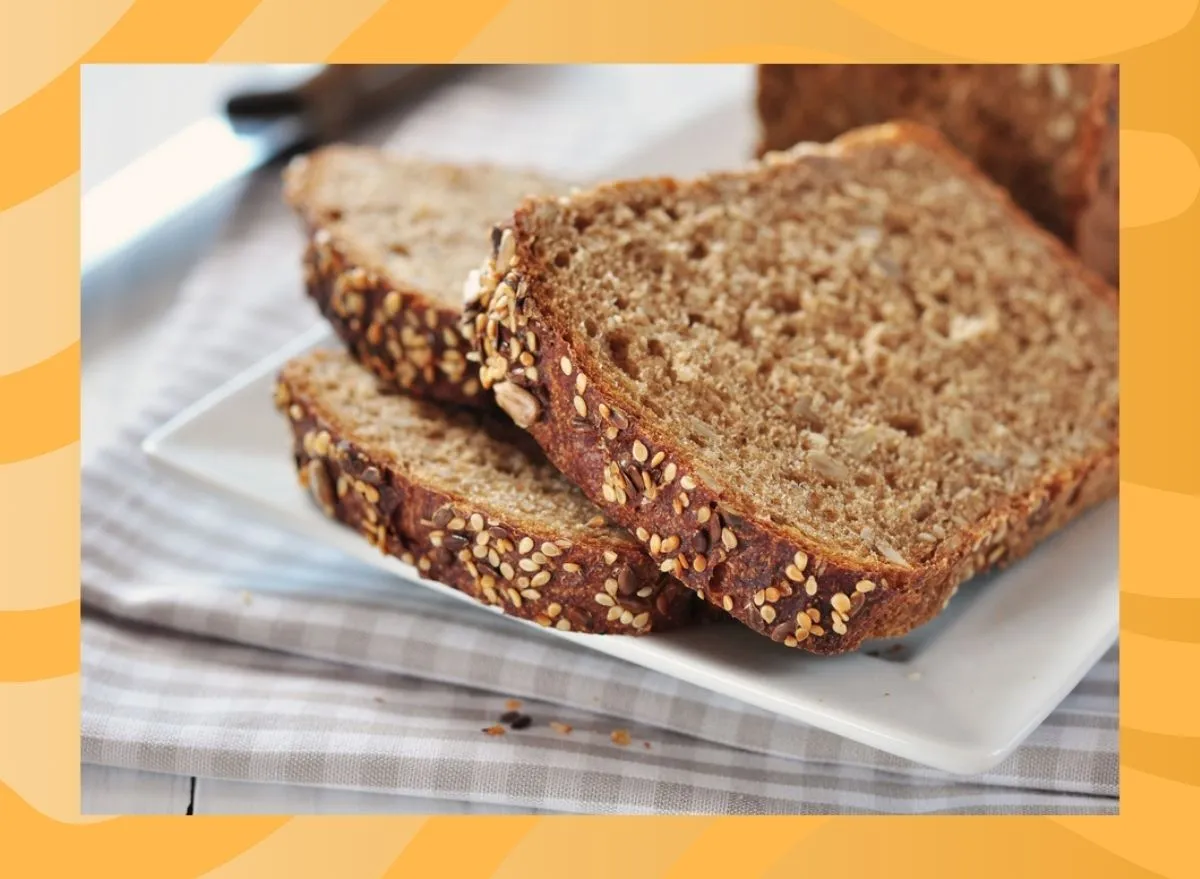
Bread has gotten a bad reputation, and as a dietitian, I feel that reputation has been unfairly dished out. Bread is a good source of carbohydrates, the macronutrients your body prefers for energy. While eating a meal of just plain white bread isn't ideal, including bread as part of an overall balanced meal with plenty of protein and healthy fats is a great way to achieve balance in your diet. If you want to make your bread work extra hard for you and still taste amazing, I recommend 100% whole wheat bread.
Whether you enjoy a slice of toast, a sandwich, or use it for breadcrumbs, whole wheat bread is a good source of nutrition and can help you feel more full and satisfied after a meal than you might if you eat white bread. While there are plenty of benefits to eating whole wheat bread, it's not the best choice for everyone, including those with celiac disease or a wheat allergy.
So what exactly are the possible benefits and side effects of eating whole wheat bread? Read on to find out, then check out the 10 Healthiest Store-Bought Breads Recommended By Dietitians.
You'll increase your fiber intake.
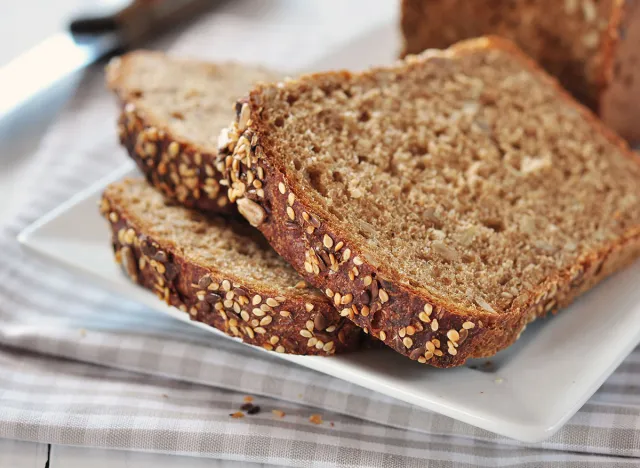
One slice of 100% whole wheat bread can have anywhere from 2 to 4 grams of fiber per slice, depending on the size of the bread. Adults should be eating 14 grams of fiber for every 1,000 calories consumed—or 28 grams on a 2,000-calorie diet. Eating fiber is associated with improved digestion, gut health, heart health, and cancer prevention, just to name a few benefits.
Adults in the United States average just 8 grams of fiber for every 1,000 calories eaten, significantly falling short of recommendations. Eating just two slices of whole wheat bread daily can help you reach over 25% of your daily fiber needs.
You'll feel full.
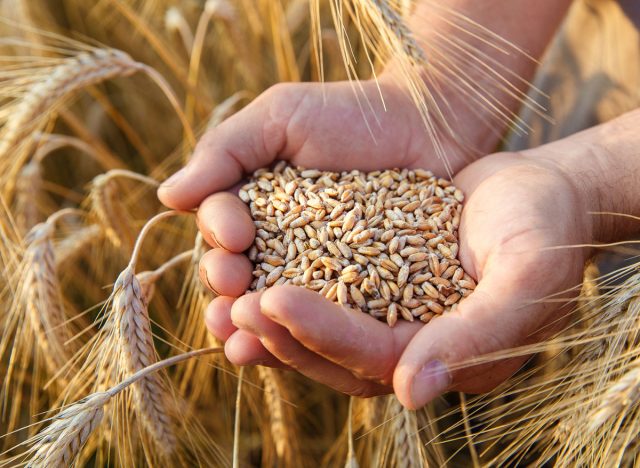
Whole wheat bread includes the entire grain of wheat, including the bran, germ, and endosperm. These elements are removed from refined grains (white bread) and, along with them, a lot of the fiber. As a complex carbohydrate, your body takes longer to digest whole wheat than white bread, which slows down the digestive process and helps you feel fuller for longer after eating.
You could lose weight.
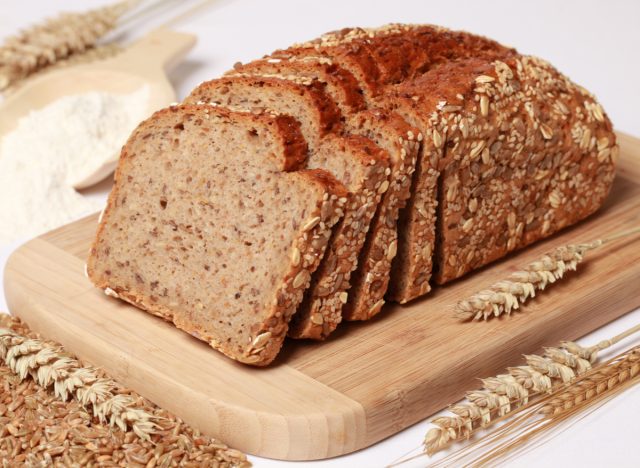
Substituting refined grains with whole wheat bread could help you lose or manage weight. Observational studies have found that whole grain intake has an inverse relationship with BMI and the risk of weight gain. According to the review data, eating whole grains can reduce hunger and increase satiety and fullness.
And this isn't a fad diet, either. Cohort studies that were followed for anywhere from 5 to 20 years found the same consistent inverse relationship: more whole grains led to less weight gain compared to those with lower whole-grain intakes.
Your cholesterol could improve.
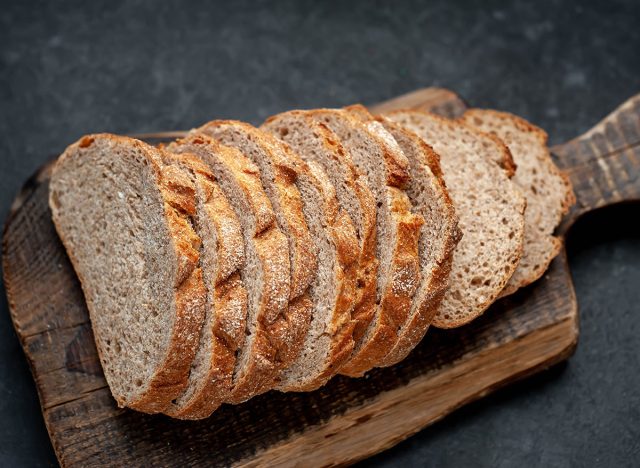
Eating whole grains like whole wheat can improve your cholesterol levels, reducing the risk of heart disease. Whole wheat bread helps to limit the production of cholesterol in the liver while also limiting the digestion and absorption of dietary cholesterol.
One small study found that adding the equivalent of four slices of whole wheat bread each day for 12 weeks resulted in an improvement in triglyceride, total cholesterol, LDL-cholesterol, HDL-cholesterol, and hemoglobin A1C, compared to no changes in the control group.
Your blood sugar may improve.

Despite popular belief, even people with diabetes can eat bread, and whole wheat bread may even offer some benefits for your blood sugar. While even whole-grain bread will increase blood sugar (it is a carbohydrate, after all), the fiber takes longer to digest, leading to a slower release of sugar into the bloodstream.
Whole wheat bread may even protect against developing type 2 diabetes as you age. Several cohort studies, including close to 200,000 adults who started without type 2 diabetes, found that those with the highest whole grain intake had a 29% lower risk of developing type 2 diabetes than those with the lowest intake.
You'll lower your risk of cancer.
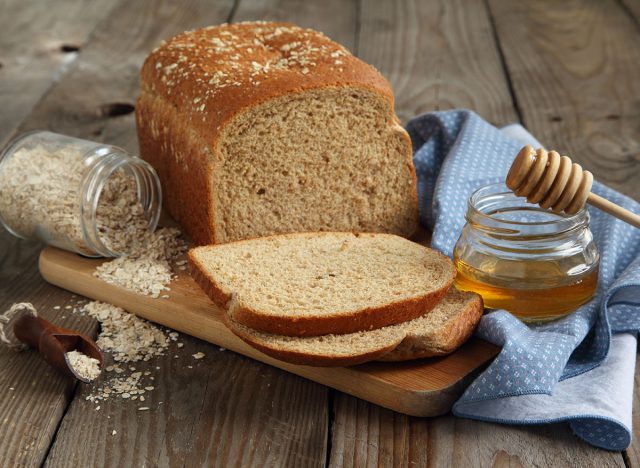
While high intakes of refined grains are associated with a higher risk of color and gastric cancers, eating whole grains may have a protective effect. Various studies have found lower rates of colon, gastric, breast, pancreatic, prostate, and esophageal cancer when comparing the highest to lowest whole grain intakes.
The association isn't minor, either. Researchers found that those who eat the highest amount of whole grains compared to the lowest amounts have a 27% lower risk of stomach cancer.
Your digestion could improve.
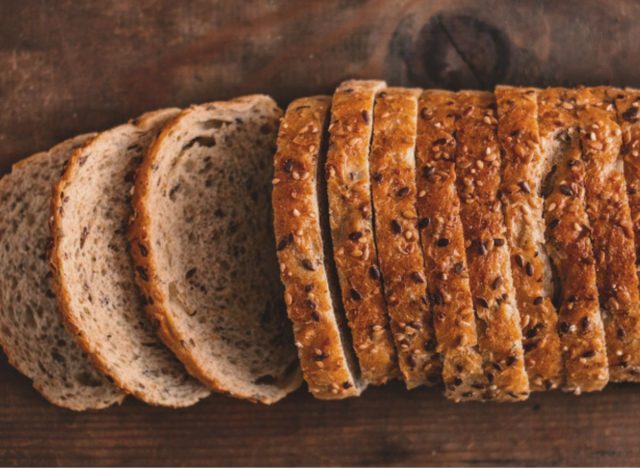
Whole wheat bread and other whole grains are a good source of insoluble fiber. This type of fiber adds bulk to stool and helps move waste through the digestive system faster. Whole-grain wheat also has a prebiotic effect on the body. As gut bacteria ferment the fibers from whole wheat bread, important fatty acids are produced that have a beneficial effect on the gut microbiome and digestion.
You might have an allergic reaction.

True wheat allergies are rare, affecting only 1% of children in the United States, with two-thirds of them outgrowing this allergy by the time they reach adulthood. If someone with a wheat allergy eats whole wheat bread, they could experience allergic reactions that affect the skin, respiratory system, and stomach or even result in anaphylactic shock.
Different from a wheat allergy, celiac disease could also cause adverse reactions to wheat bread because of the gluten it contains. If someone with celiac disease eats whole wheat bread, they could experience side effects that range from diarrhea to joint pain or skin rashes.
- Source: How much dietary fiber should I eat? (n.d.-c). AskUSDA. https://ask.usda.gov/s/article/How-much-dietary-fiber-should-I-eat
- Source: Barber TM, Kabisch S, Pfeiffer AFH, Weickert MO. The Health Benefits of Dietary Fibre. Nutrients. 2020 Oct 21;12(10):3209. doi: 10.3390/nu12103209. PMID: 33096647; PMCID: PMC7589116.
- Source: Over time, racial and ethnic gaps in dietary fiber consumption per 1,000 calories have widened. (n.d.). https://www.ers.usda.gov/data-products/chart-gallery/gallery/chart-detail/?chartId=106189
- Source: Sanders LM, Zhu Y, Wilcox ML, Koecher K, Maki KC. Effects of Whole Grain Intake, Compared with Refined Grain, on Appetite and Energy Intake: A Systematic Review and Meta-Analysis. Adv Nutr. 2021 Jul 30;12(4):1177-1195. doi: 10.1093/advances/nmaa178. PMID: 33530093; PMCID: PMC8321865.
- Source: Maki KC, Palacios OM, Koecher K, Sawicki CM, Livingston KA, Bell M, Nelson Cortes H, McKeown NM. The Relationship between Whole Grain Intake and Body Weight: Results of Meta-Analyses of Observational Studies and Randomized Controlled Trials. Nutrients. 2019 May 31;11(6):1245. doi: 10.3390/nu11061245. PMID: 31159235; PMCID: PMC6627338.
- Source: Nazari J, Yadegari N, Khodam S, Almasi-Hashian A, Amini S. Effect of Consumption of Whole-Wheat Breads on FBS, HbA1c, and Blood Lipids in Patients with Type 2 Diabetes. Prev Nutr Food Sci. 2021 Sep 30;26(3):269-274. doi: 10.3746/pnf.2021.26.3.269. PMID: 34737987; PMCID: PMC8531422.
- Source: Hu, Y., Ding, M., Sampson, L., Willett, W. C., Manson, J. E., Wang, M., Rosner, B., & Hu, F. B. (2020b). Intake of whole grain foods and risk of type 2 diabetes: results from three prospective cohort studies. BMJ, m2206. https://doi.org/10.1136/bmj.m2206
- Source: Gaesser, G.A. Whole Grains, Refined Grains, and Cancer Risk: A Systematic Review of Meta-Analyses of Observational Studies. Nutrients 2020, 12, 3756. https://doi.org/10.3390/nu12123756
- Source: Xu Y, Yang J, Du L, Li K, Zhou Y. Association of whole grain, refined grain, and cereal consumption with gastric cancer risk: A meta-analysis of observational studies. Food Sci Nutr. 2018 Nov 11;7(1):256-265. doi: 10.1002/fsn3.878. PMID: 30680179; PMCID: PMC6341150.
- Source: Slavin J. Fiber and prebiotics: mechanisms and health benefits. Nutrients. 2013 Apr 22;5(4):1417-35. doi: 10.3390/nu5041417. PMID: 23609775; PMCID: PMC3705355.









